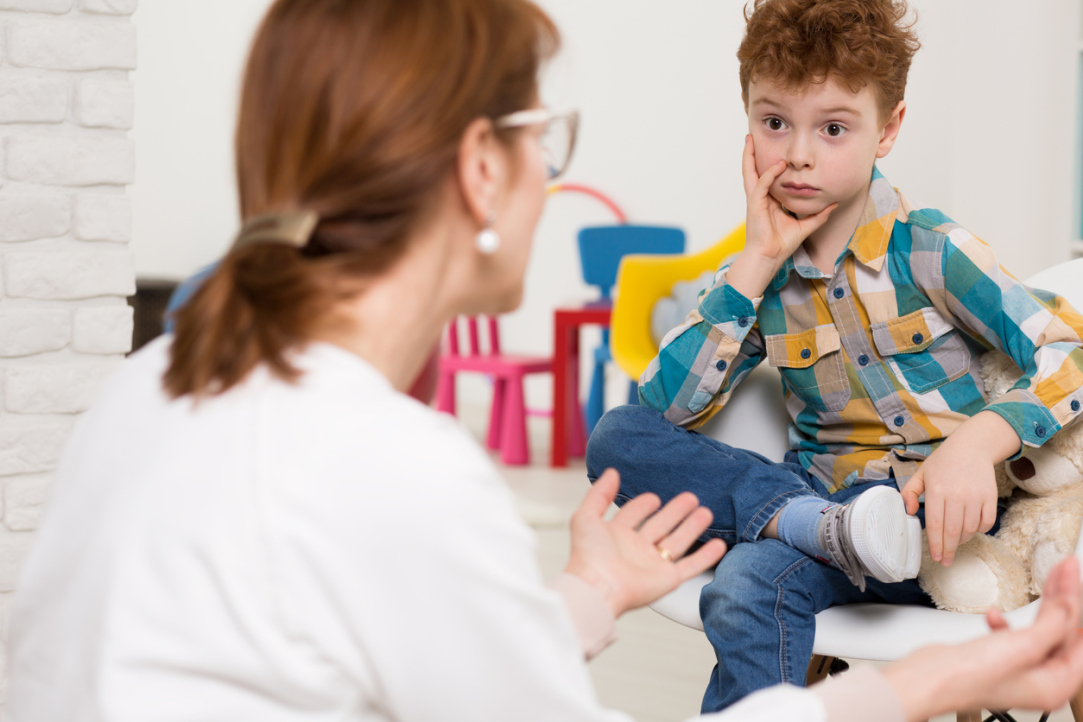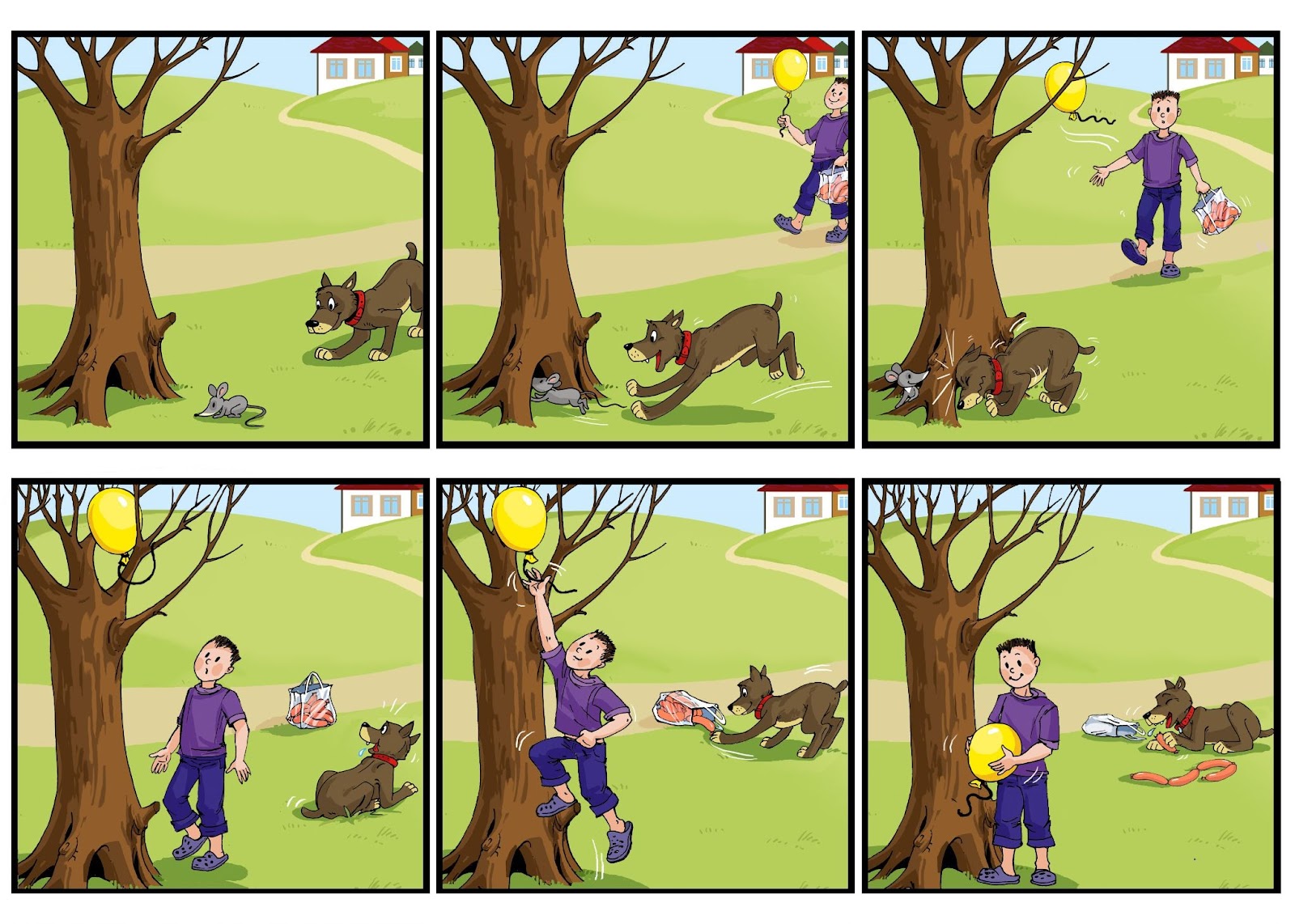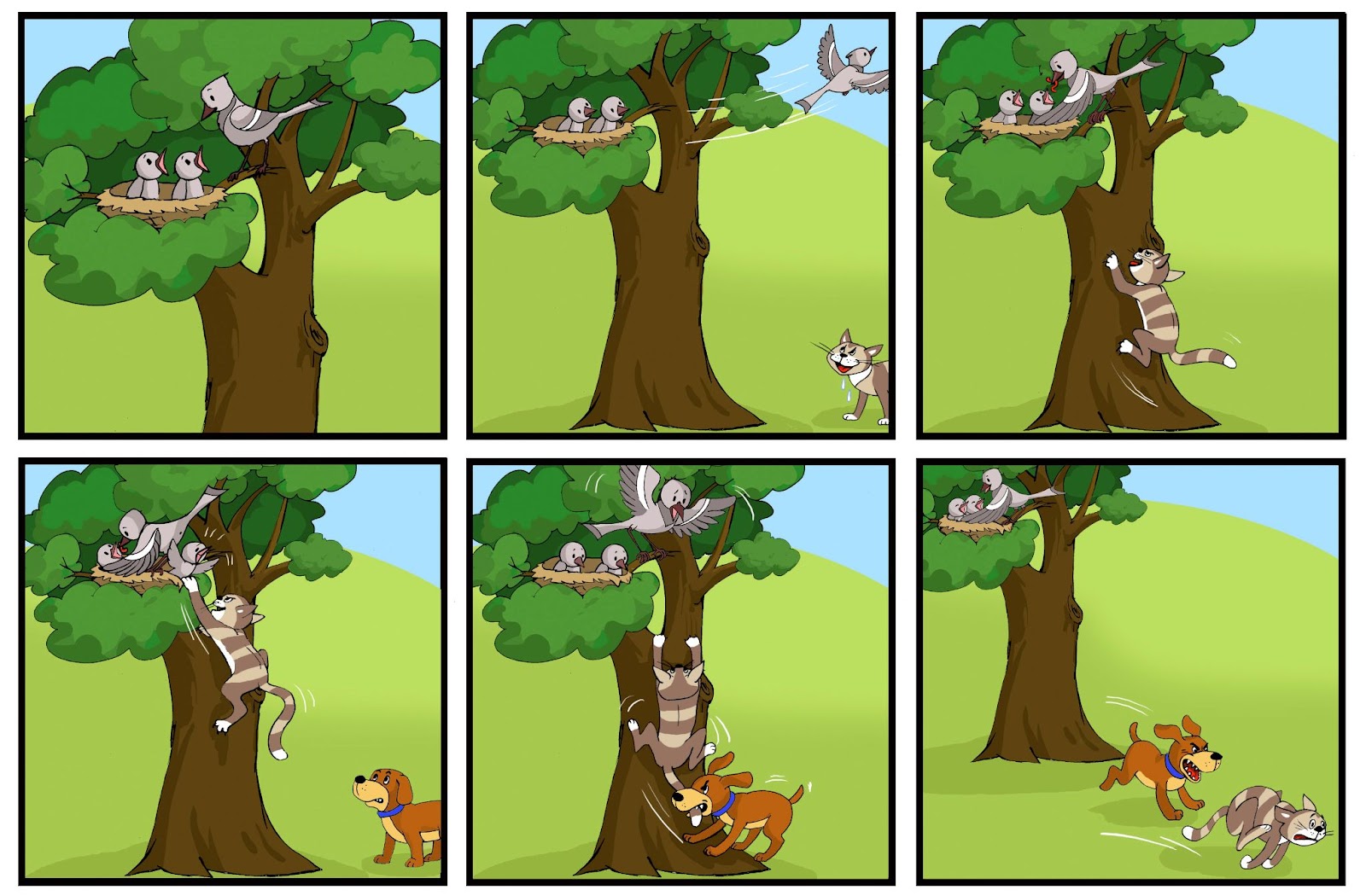Researchers Uncover Specific Aspects of Story Comprehension in Young Children

For the first time, psycholinguists from the HSE Centre for Language and Brain, in collaboration with colleagues from the USA and Germany, recorded eye movements during a test to assess narrative skills in young children and adults. The researchers found that story comprehension depends on plot structure, and that children aged five to six tend to struggle with questions about protagonists' internal states. The study findings have been published in the Journal of Experimental Child Psychology.
The ability to perceive and produce coherent stories, also known as narrative skills, marks an important stage in the development of children's language and cognitive functions. Research shows that story comprehension develops in several stages, progressing from the simple perception of event sequences to the ability to interpret protagonists' actions and internal states, such as their thoughts, emotions, and intentions.
Specialised tests are employed to assess narrative skills. One of the most widely used tools for evaluating the narrative abilities of multilingual children is the Multilingual Assessment Instrument for Narratives (MAIN). It includes four animal stories—Cat, Dog, Baby Goats, and Baby Birds—each told through a sequence of six pictures. The child's task is to produce a story based on pictures and answer ten questions about each story. The questions address the motives behind the protagonists' actions (such as ‘Why did the dog jump up the tree?’) as well as their internal states (eg ‘How does the dog feel?’)
Although the stories are similar in structural and visual complexity, some studies, in particular, those by researchers at Uppsala University—have shown that the Cat and Dog stories (Figure 1) may be easier for children to process than the Baby Goats and Baby Birds stories (Figure 2). One possible explanation is that children may find it particularly challenging to answer questions about the internal states of the story's protagonists, compared to questions about their motivations and goals. In a new study, researchers from the Centre for Language and Brain at HSE University, in collaboration with colleagues from the USA and Germany, tested this hypothesis and also investigated whether visual cues would make it easier for children to respond to questions about the protagonists' internal states.


The researchers conducted two experiments: one with 53 children aged five and six as the experimental group, and another with 20 young adults as the control group. Participants viewed the stories on a computer screen and answered questions about the protagonists' motives and internal states. In some cases, visual cues were provided, such as a circle drawn around a protagonist to attract attention to their facial expression. During the experiment, eye-tracking technology was used to record participants' eye movements, helping identify which elements of the story took them longer to process. The authors analysed the accuracy of responses to comprehension questions based on the story, the type of question, and the presence of a visual cue.
Although adults generally performed better on the test than children, the Baby Birds and Baby Goats stories were more difficult for all participants to comprehend compared to the Cat and Dog stories. This may be due to the number of protagonists and the plot structure: both the Cat and Dog stories feature fewer protagonists, with the pictures more clearly indicating their motives—eg the dog is hungry and wants to grab sausages from the boy’s bag. In contrast, the Baby Goats and Baby Birds stories involve more protagonists, whose motives may be less obvious, such as why the dog chases the cat away. In general, children performed worse on questions about the protagonists' internal states—for instance, how the dog felt when the mouse ran away in Picture 1—compared to questions about their goals, such as what they intended to do and why, like why the dog grabbed the sausages. Visual cues, while they helped draw attention to the details of the stories, did not improve the children’s ability to interpret the protagonists' emotions.
The study contributes to understanding the mechanisms underlying story perception in children and may be useful in developing new diagnostic methods for language disorders.

Vladislava Staroverova
'Our findings suggest that at the age of five or six, children lack sufficient cognitive experience to assess the internal states of protagonists in the pictures and find it more challenging to interpret the protagonists' internal world than their motives for actions. This knowledge can contribute to the development of programmes aimed at enhancing language skills and emotional intelligence,' explains Vladislava Staroverova, Junior Research Fellow at the Centre for Language and Brain and co-author of the study.
See also:
HSE Psycholinguists Launch Digital Tool to Spot Dyslexia in Children
Specialists from HSE University's Centre for Language and Brain have introduced LexiMetr, a new digital tool for diagnosing dyslexia in primary school students. This is the first standardised application in Russia that enables fast and reliable assessment of children’s reading skills to identify dyslexia or the risk of developing it. The application is available on the RuStore platform and runs on Android tablets.
Physicists Propose New Mechanism to Enhance Superconductivity with 'Quantum Glue'
A team of researchers, including scientists from HSE MIEM, has demonstrated that defects in a material can enhance, rather than hinder, superconductivity. This occurs through interaction between defective and cleaner regions, which creates a 'quantum glue'—a uniform component that binds distinct superconducting regions into a single network. Calculations confirm that this mechanism could aid in developing superconductors that operate at higher temperatures. The study has been published in Communications Physics.
Neural Network Trained to Predict Crises in Russian Stock Market
Economists from HSE University have developed a neural network model that can predict the onset of a short-term stock market crisis with over 83% accuracy, one day in advance. The model performs well even on complex, imbalanced data and incorporates not only economic indicators but also investor sentiment. The paper by Tamara Teplova, Maksim Fayzulin, and Aleksei Kurkin from the Centre for Financial Research and Data Analytics at the HSE Faculty of Economic Sciences has been published in Socio-Economic Planning Sciences.
Mistakes That Explain Everything: Scientists Discuss the Future of Psycholinguistics
Today, global linguistics is undergoing a ‘multilingual revolution.’ The era of English-language dominance in the cognitive sciences is drawing to a close as researchers increasingly turn their attention to the diversity of world languages. Moreover, multilingualism is shifting from an exotic phenomenon to the norm—a change that is transforming our understanding of human cognitive abilities. The future of experimental linguistics was the focus of a recent discussion at HSE University.
Larger Groups of Students Use AI More Effectively in Learning
Researchers at the Institute of Education and the Faculty of Economic Sciences at HSE University have studied what factors determine the success of student group projects when they are completed with the help of artificial intelligence (AI). Their findings suggest that, in addition to the knowledge level of the team members, the size of the group also plays a significant role—the larger it is, the more efficient the process becomes. The study was published in Innovations in Education and Teaching International.
New Models for Studying Diseases: From Petri Dishes to Organs-on-a-Chip
Biologists from HSE University, in collaboration with researchers from the Kulakov National Medical Research Centre for Obstetrics, Gynecology, and Perinatology, have used advanced microfluidic technologies to study preeclampsia—one of the most dangerous pregnancy complications, posing serious risks to the life and health of both mother and child. In a paper published in BioChip Journal, the researchers review modern cellular models—including advanced placenta-on-a-chip technologies—that offer deeper insights into the mechanisms of the disorder and support the development of effective treatments.
Using Two Cryptocurrencies Enhances Volatility Forecasting
Researchers from the HSE Faculty of Economic Sciences have found that Bitcoin price volatility can be effectively predicted using Ethereum, the second-most popular cryptocurrency. Incorporating Ethereum into a predictive model reduces the forecast error to 23%, outperforming neural networks and other complex algorithms. The article has been published in Applied Econometrics.
Administrative Staff Are Crucial to University Efficiency—But Only in Teaching-Oriented Institutions
An international team of researchers, including scholars from HSE University, has analysed how the number of non-academic staff affects a university’s performance. The study found that the outcome depends on the institution’s profile: in research universities, the share of administrative and support staff has no effect on efficiency, whereas in teaching-oriented universities, there is a positive correlation. The findings have been published in Applied Economics.
Advancing Personalised Therapy for More Effective Cancer Treatment
Researchers from the International Laboratory of Microphysiological Systems at HSE University's Faculty of Biology and Biotechnology are developing methods to reduce tumour cell resistance to drugs and to create more effective, personalised cancer treatments. In this interview with the HSE News Service, Diana Maltseva, Head of the Laboratory, talks about their work.
Physicists at HSE University Reveal How Vortices Behave in Two-Dimensional Turbulence
Researchers from the Landau Institute for Theoretical Physics of the Russian Academy of Sciences and the HSE University's Faculty of Physics have discovered how external forces affect the behaviour of turbulent flows. The scientists showed that even a small external torque can stabilise the system and extend the lifetime of large vortices. These findings may improve the accuracy of models of atmospheric and oceanic circulation. The paper has been published in Physics of Fluids.


